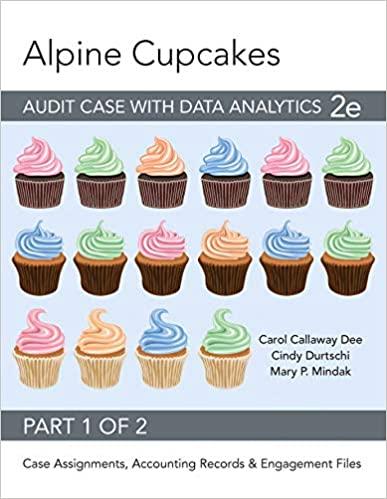Question
704(b) application. G and L form a limited partnership. G, the general partner, contributes $80,000 and L, the limited partnership, contributes $320,000. The partnership purchases
704(b) application.
G and L form a limited partnership. G, the general partner, contributes $80,000 and L, the limited partnership, contributes $320,000. The partnership purchases commercial real estate on leased land, paying $400,000 cash and borrowing $1,600,000 on a nonrecourse basis from a commercial lender. The terms of the loan required payment of interest only for the first five years. The GL partnership agreement allocates all income, gain, loss and deductions 20% to G and 80% to L until the first time that the partnership has recognized items of income and gain the exceed the items of loss and deduction recognized over its life, and then all further partnership items are to be allocated equally between G and L. At the time, the partnership agreement is entered into, there is a reasonable likelihood that, over the partnerships life, it will recognize amounts of income and gain significantly in excess of losses and deductions. The partnership agreement requires that all allocations are to be reflected in appropriate adjustments to the partners capital accounts and liquidation proceeds are to be distributed in accordance with positive capital account balances. Only G is required to restore a capital account deficit. The partnership agreement contains a qualified income offset for L and a minimum gain chargeback provision. Finally, the agreement provides that all none liquidating distributions will be made 20% to G and 80% to L until a total of $400,000 (equal to the partners original cash contributions) has been distributed, and thereafter all distributions will be made equally to G and L. The partnership depreciates its property using the straight-line method over a valid (you may assume) 10-year recovery period.
(a) Assume that rental income from the property of $150,000 equals operating expenses (including interest on the nonrecourse debt) of $150,000. Determine the allocation of the partnerships cost recovery deductions in each of the first three years of operations and determine the partners capital accounts at the end of each year.
(b) Same as (a), above, except the partnership agreement provides that L will be allocated 99% and G 1% of all the partnerships cost recovery deductions.
(c) Same as (a), above, except that the partnership agreement provides that L will allocated 70% and G 30% of all the partnership nonrecourse deductions.
(d) Is there an allocation under the minimum gain chargeback in (a), above, if at the end of year four G contributes $80,000 and L contributes $320,000 to the partnership, which uses the funds to pay down $400,000 of the liability.
(e) Is there an allocation under the minimum gain chargeback in (a), above, if during year four the partnership converts $600,000 of the $1,600,000 nonrecourse liability to a recourse liability? Determine the partners capital accounts at the end of years four and five.
(f) What results under the facts of (a), above, in year four if in that year, when the property has appreciated in value, the partnership incurs an additional $300,000 of nonrecourse liability and it distributes the proceeds $60,000 to G and $240,000 to L?
Step by Step Solution
There are 3 Steps involved in it
Step: 1

Get Instant Access to Expert-Tailored Solutions
See step-by-step solutions with expert insights and AI powered tools for academic success
Step: 2

Step: 3

Ace Your Homework with AI
Get the answers you need in no time with our AI-driven, step-by-step assistance
Get Started


